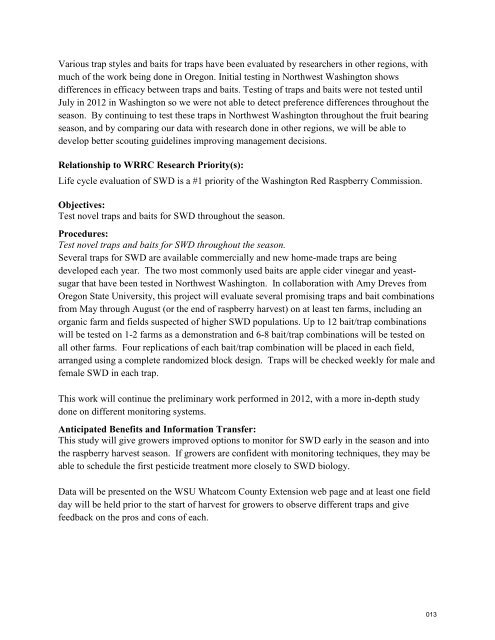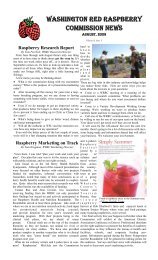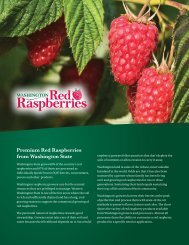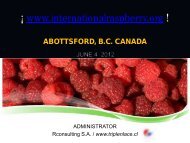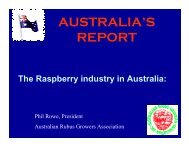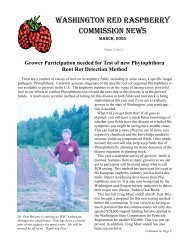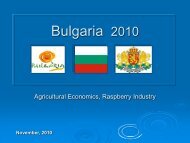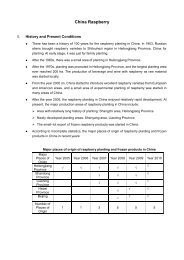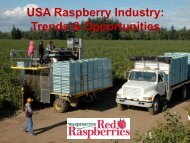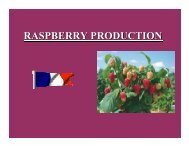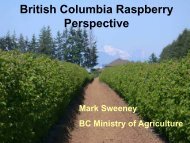2012 - Washington Red Raspberry Commission
2012 - Washington Red Raspberry Commission
2012 - Washington Red Raspberry Commission
You also want an ePaper? Increase the reach of your titles
YUMPU automatically turns print PDFs into web optimized ePapers that Google loves.
Various trap styles and baits for traps have been evaluated by researchers in other regions, with<br />
much of the work being done in Oregon. Initial testing in Northwest <strong>Washington</strong> shows<br />
differences in efficacy between traps and baits. Testing of traps and baits were not tested until<br />
July in <strong>2012</strong> in <strong>Washington</strong> so we were not able to detect preference differences throughout the<br />
season. By continuing to test these traps in Northwest <strong>Washington</strong> throughout the fruit bearing<br />
season, and by comparing our data with research done in other regions, we will be able to<br />
develop better scouting guidelines improving management decisions.<br />
Relationship to WRRC Research Priority(s):<br />
Life cycle evaluation of SWD is a #1 priority of the <strong>Washington</strong> <strong>Red</strong> <strong>Raspberry</strong> <strong>Commission</strong>.<br />
Objectives:<br />
Test novel traps and baits for SWD throughout the season.<br />
Procedures:<br />
Test novel traps and baits for SWD throughout the season.<br />
Several traps for SWD are available commercially and new home-made traps are being<br />
developed each year. The two most commonly used baits are apple cider vinegar and yeastsugar<br />
that have been tested in Northwest <strong>Washington</strong>. In collaboration with Amy Dreves from<br />
Oregon State University, this project will evaluate several promising traps and bait combinations<br />
from May through August (or the end of raspberry harvest) on at least ten farms, including an<br />
organic farm and fields suspected of higher SWD populations. Up to 12 bait/trap combinations<br />
will be tested on 1-2 farms as a demonstration and 6-8 bait/trap combinations will be tested on<br />
all other farms. Four replications of each bait/trap combination will be placed in each field,<br />
arranged using a complete randomized block design. Traps will be checked weekly for male and<br />
female SWD in each trap.<br />
This work will continue the preliminary work performed in <strong>2012</strong>, with a more in-depth study<br />
done on different monitoring systems.<br />
Anticipated Benefits and Information Transfer:<br />
This study will give growers improved options to monitor for SWD early in the season and into<br />
the raspberry harvest season. If growers are confident with monitoring techniques, they may be<br />
able to schedule the first pesticide treatment more closely to SWD biology.<br />
Data will be presented on the WSU Whatcom County Extension web page and at least one field<br />
day will be held prior to the start of harvest for growers to observe different traps and give<br />
feedback on the pros and cons of each.<br />
013


